SUMMARY
This is AI generated summarization, which may have errors. For context, always refer to the full article.
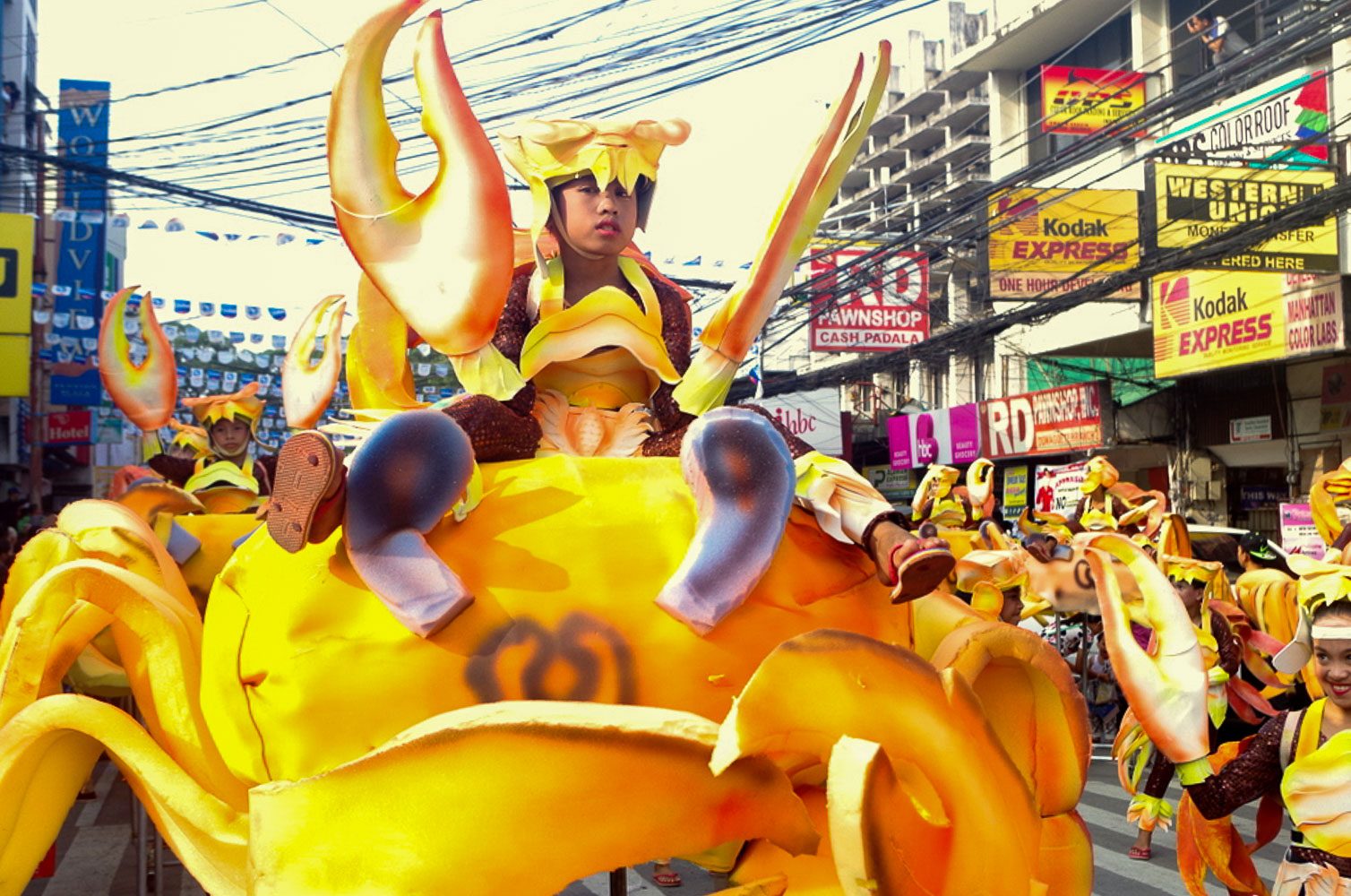
There’s a feeling of timelessness to Dumaguete City, embedded in its sea-swept promenade, narrow streets and folksy buildings. There’s a sweetness to the place, of the kind you’d expect from a smaller provincial town rather than a big city. Then again, Dumaguete isn’t exactly what you’d call a big city.
People had told me a few things about Dumaguete before my visit. One, that it was a college town, home to the venerable Silliman University, established on these shores by Americans in 1901.
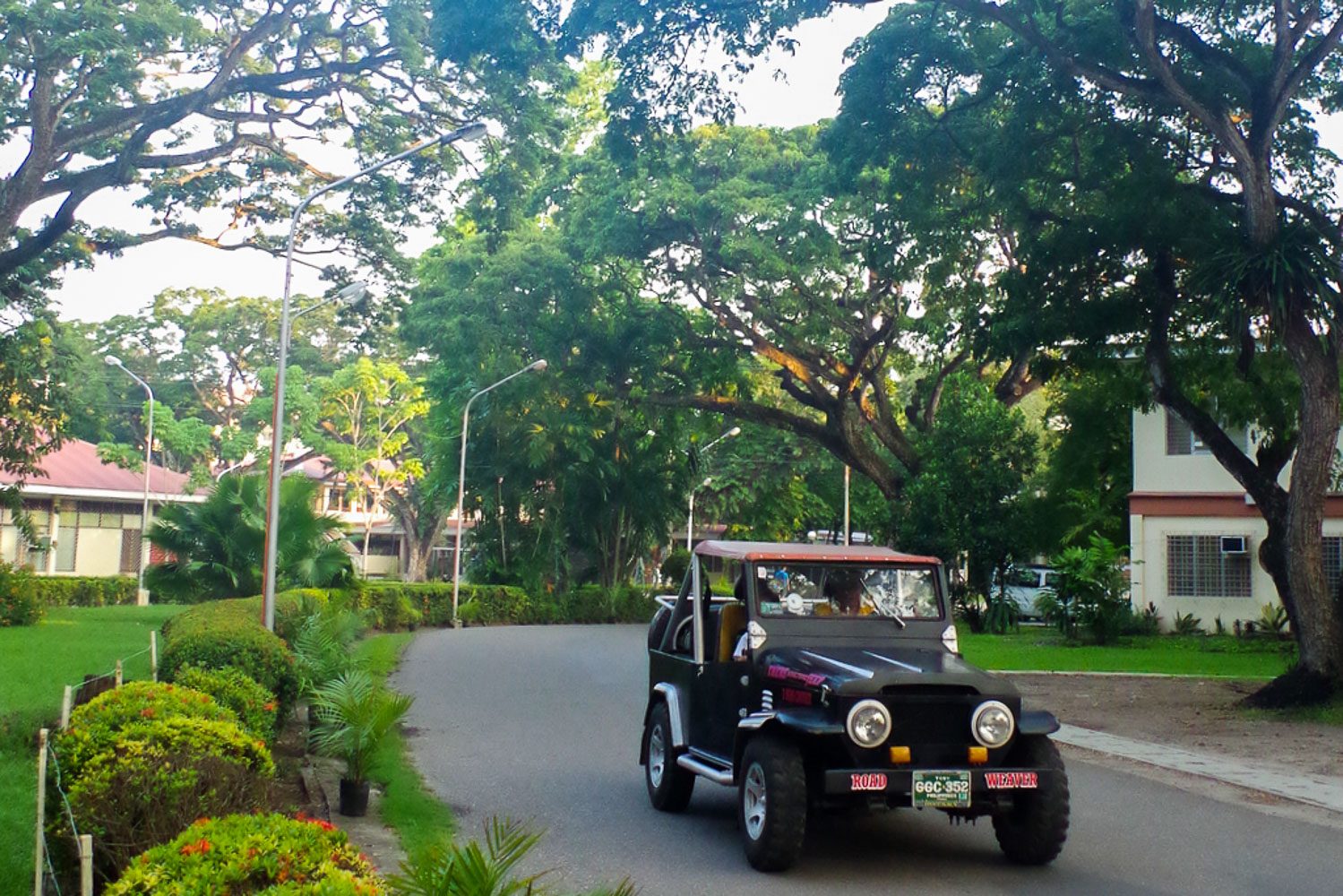
In light of that, it made sense to hear that Dumaguete was an abode for writers and artists. And it was a popular retirement locale, especially among expats. No doubt both the retirees and the creatives basked in the town’s resort-like serenity.
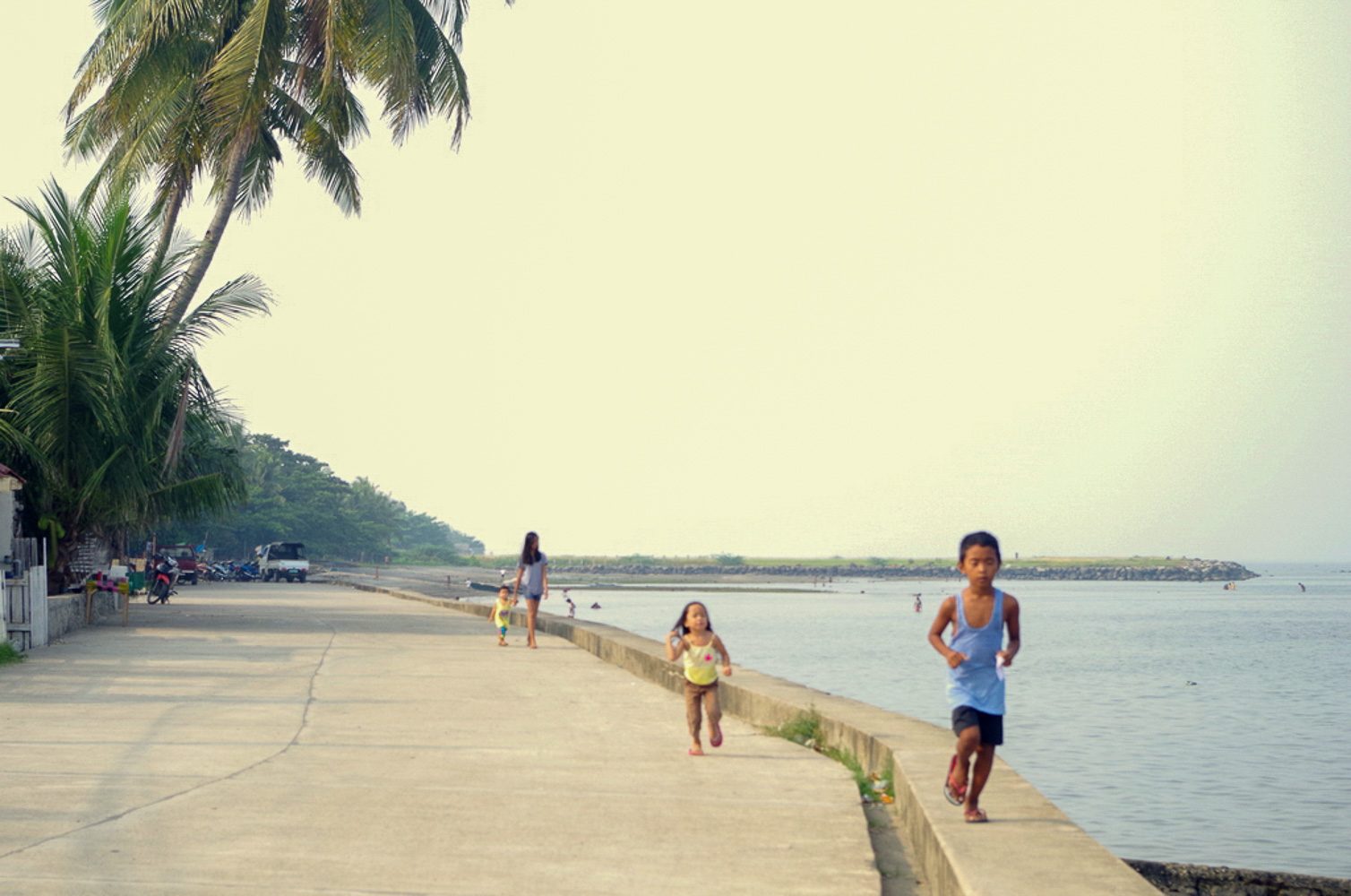
I’d visited Dumaguete because of what I’d heard – I was dying to see whether it was the enchanting place I’d imagined out of the snippets I’d learned. I left with an impression of a city more complex than I’d expected. I admire its historical trappings, its leisurely atmosphere, its distinctive character. But other observations bring some uncertainty.
This genial city is rumbling with tiny earthquakes of a kind of internal tension. A wonderfully old-fashioned inertia permeates Dumaguete, with its corner bakeshops and heritage architecture. But then you’ll frown at the garish banners hawking mobile networks and the glossy new 7-11s and the behemoth Robinson’s supermall. The dissonance can be aggravating.
While I’m not against development, I believe it can go forward either wisely or unwisely. Imagine if the city lost all of its little family-run bakeries and sari-sari stores, and giant chain stores took their place. Dumaguete would lose a small yet vital piece of its character.
In search of an art scene
I had planned on exploring the Dumaguete art scene – the thought of encountering local artists at their regular haunts excited me more than the idea of jetting off to Apo Island. Well, things didn’t exactly work out as I’d expected.
I had scribbled a short list of artsy places to visit. The first was Kri Restaurant on Silliman Avenue. I decided to drop by for an early lunch. I found Kri to be a stylish space, clearly furnished with an eye for chic design. The paintings on display were cheeky, pop-art, hip.
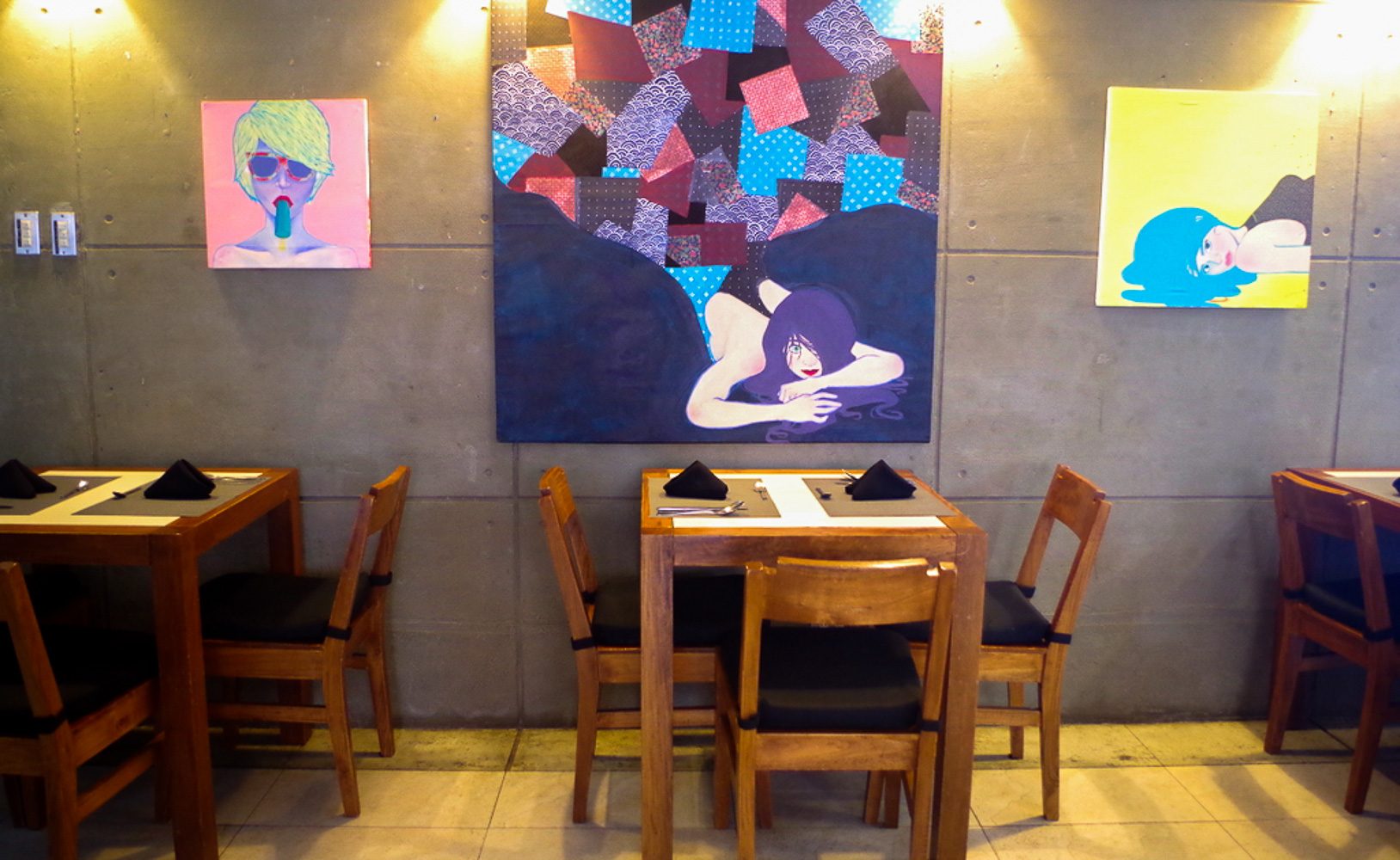
Kri’s sense of aesthetics extended to the food presentation – my fish burritos came plated on a narrow dish with an hourglass shape, and looked almost too pretty to eat. (Oh, I ate ’em. They were scrumptious.)

After I’d chowed down and eyeballed the artworks, there wasn’t any other reason for me to stay. I consulted my list – a lot of the options were eateries, and I had just eaten. Hmm.
Well, coffee’s always good. I dropped by The Bean Connection across the way. Given the day’s brain-searing heat, I ditched my normal penchant for brewed and ordered a mochaccino. And also grabbed a red velvet cupcake, why not? It was cheap. (Seriously… Dumaguete’s food prices being what they are, if I’d stayed in town I’d be battling my waistline in no time.)
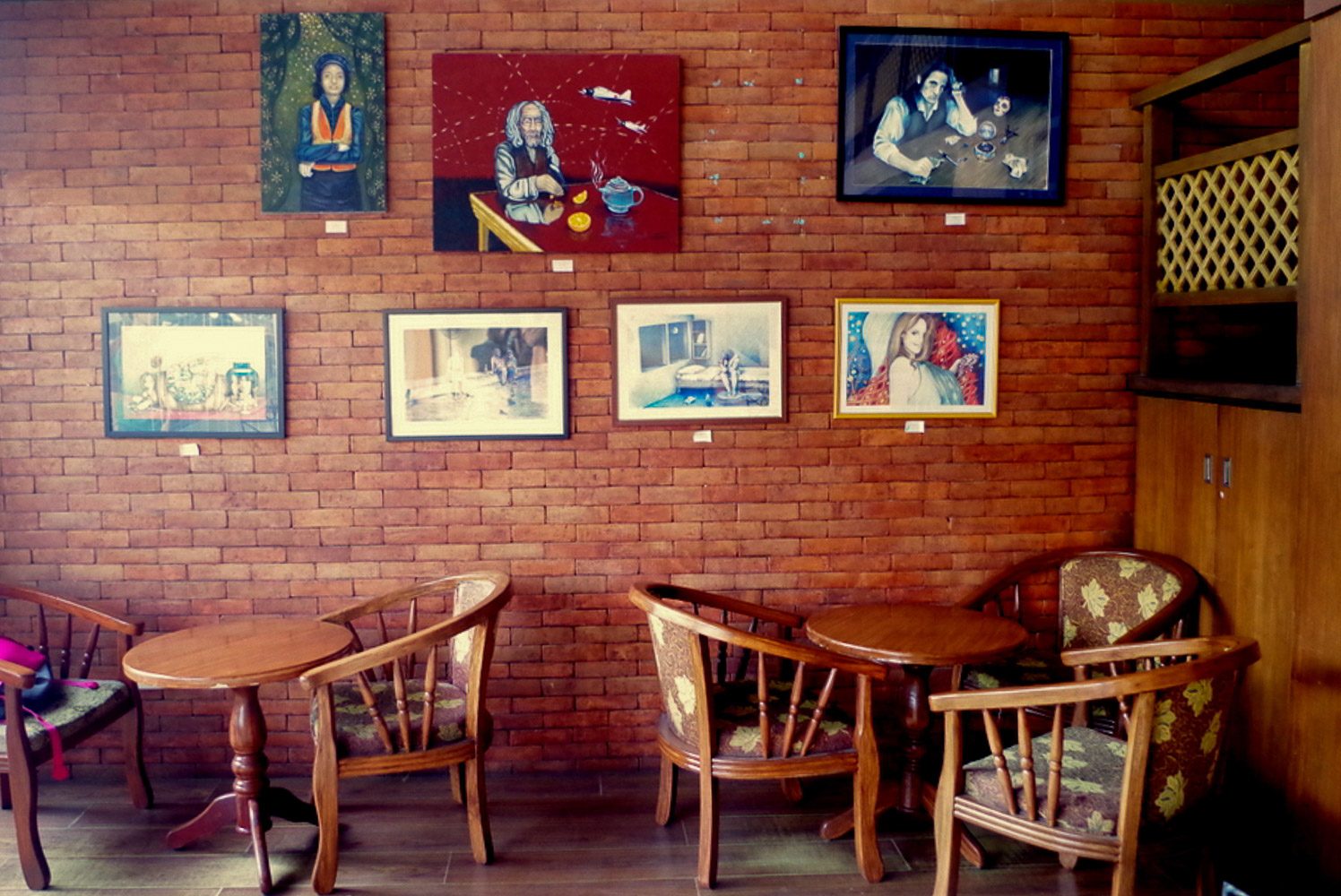
The Bean Connection was accoutred in typical post-millennial coffeeshop fashion—it kinda looks like Starbucks, in other words. It had a wall devoted to artworks (though not many of them were to my taste). On the opposite wall hung a large, lovely painting covered in warm orange hues, depicting a crooked, twisty tree. Trouble was, I couldn’t exactly stand there admiring it, since customers were sitting at a table right in front of the painting.
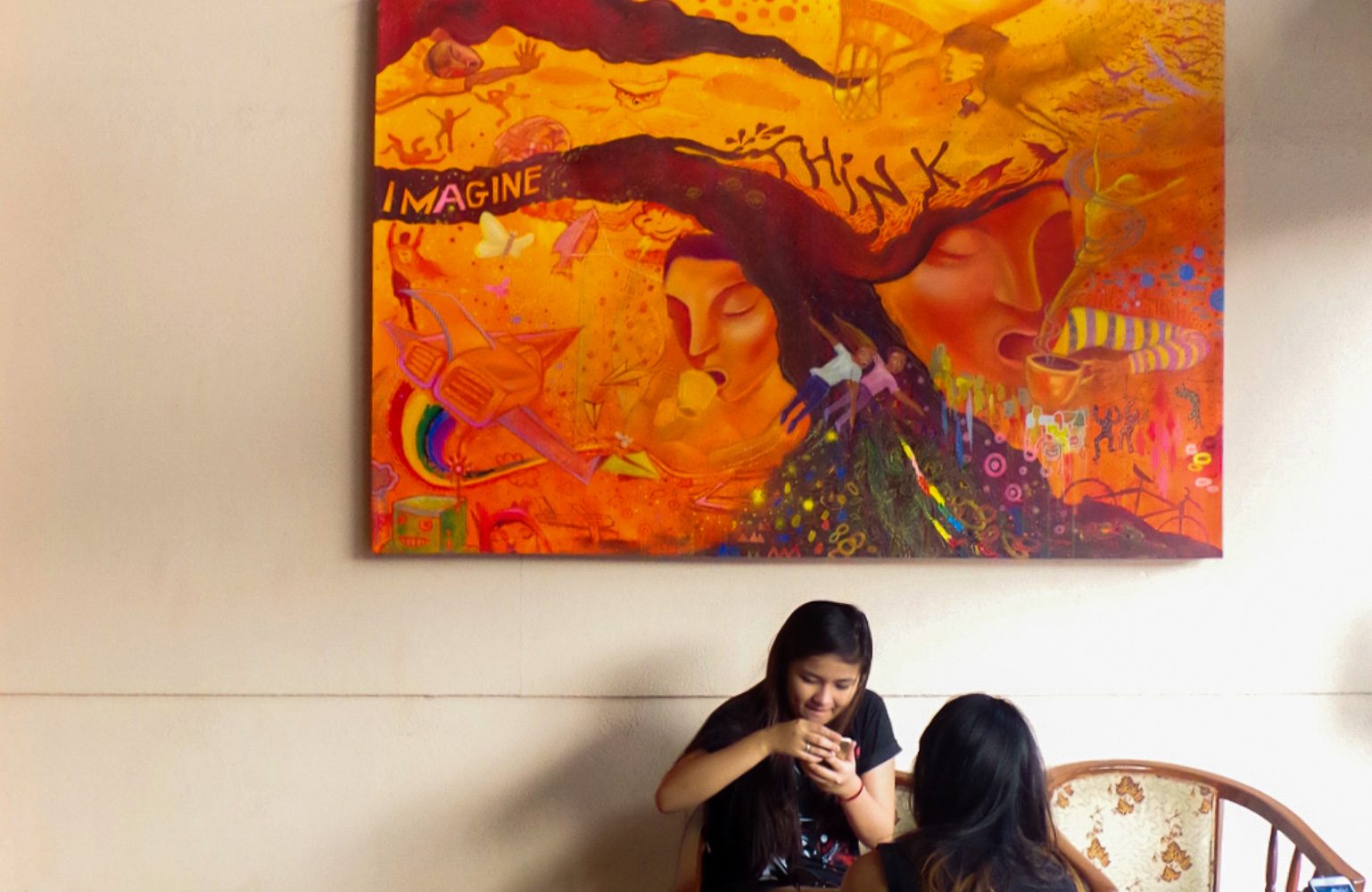
After The Bean Connection, I was at a bit of a loss. I could use the advice of a local, and I did know one, a theater actress named Onna. She’d agreed to help me out. But she was working and couldn’t meet me till late. What to do, what to do….
A stroll in Silliman
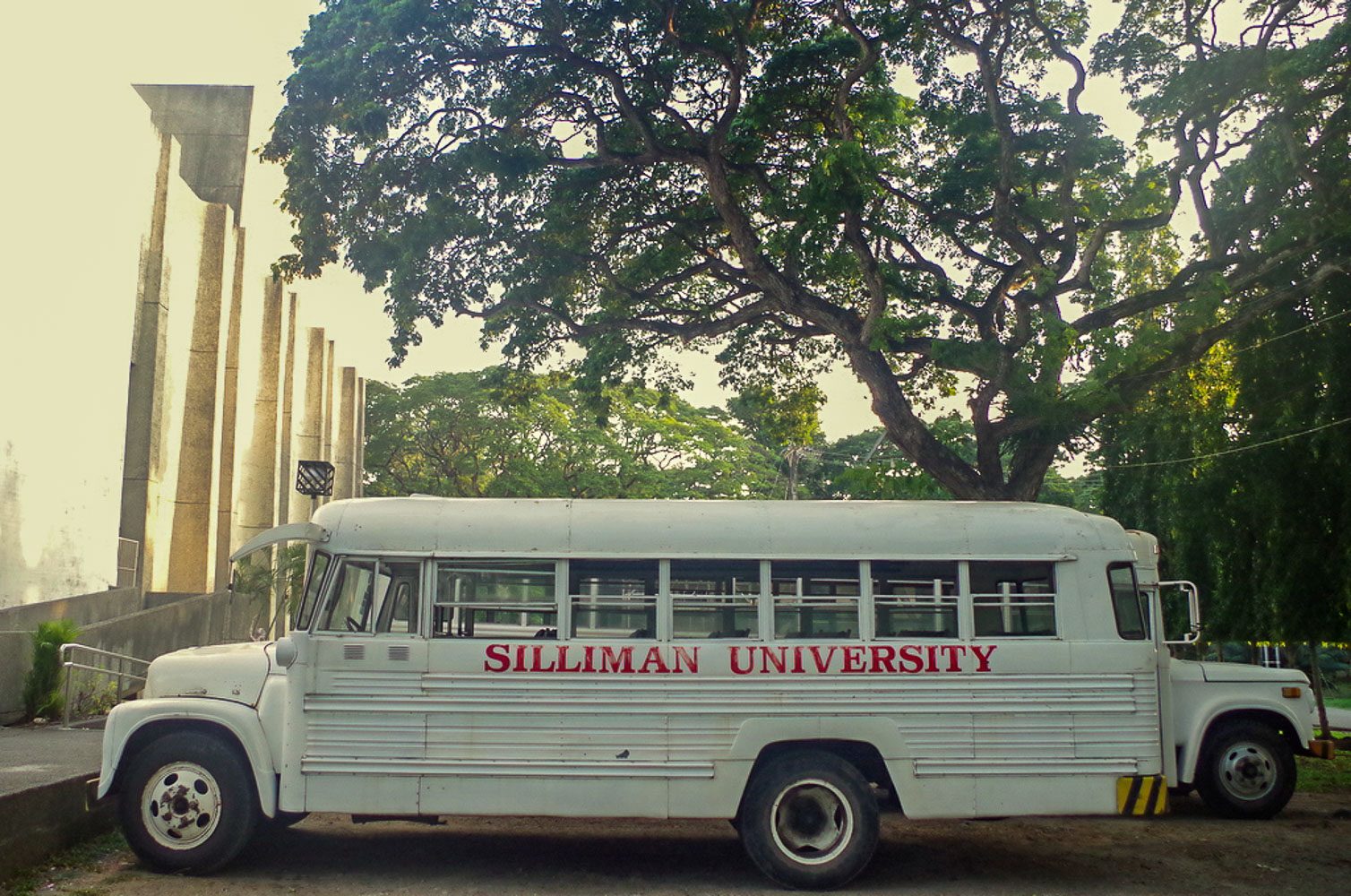
Silliman University was only a short walk away from my hotel room. Hibbard Ave was a fairly nice street for a stroll, though I did feel a little too close to the cars and clattering pedicabs passing by. But the charming old buildings along the sides incited pleasant reverie. That is, until I got distracted by all the Globe Telecom advertising banners along the route. (Note to the local government: can we not have ads spoiling the vibe of Hibbard Ave? Thanks.)
I entered the campus and got that wonderful feeling I always have when visiting such places. It’s very hard to describe, but you know how you get a certain feeling every time you step inside a hospital? I get a very different (warmer) feeling whenever I visit a sprawling, historic college campus. These are spaces I find soothing yet weirdly energizing – as if the collective buzz of many young minds electrified the atmosphere.
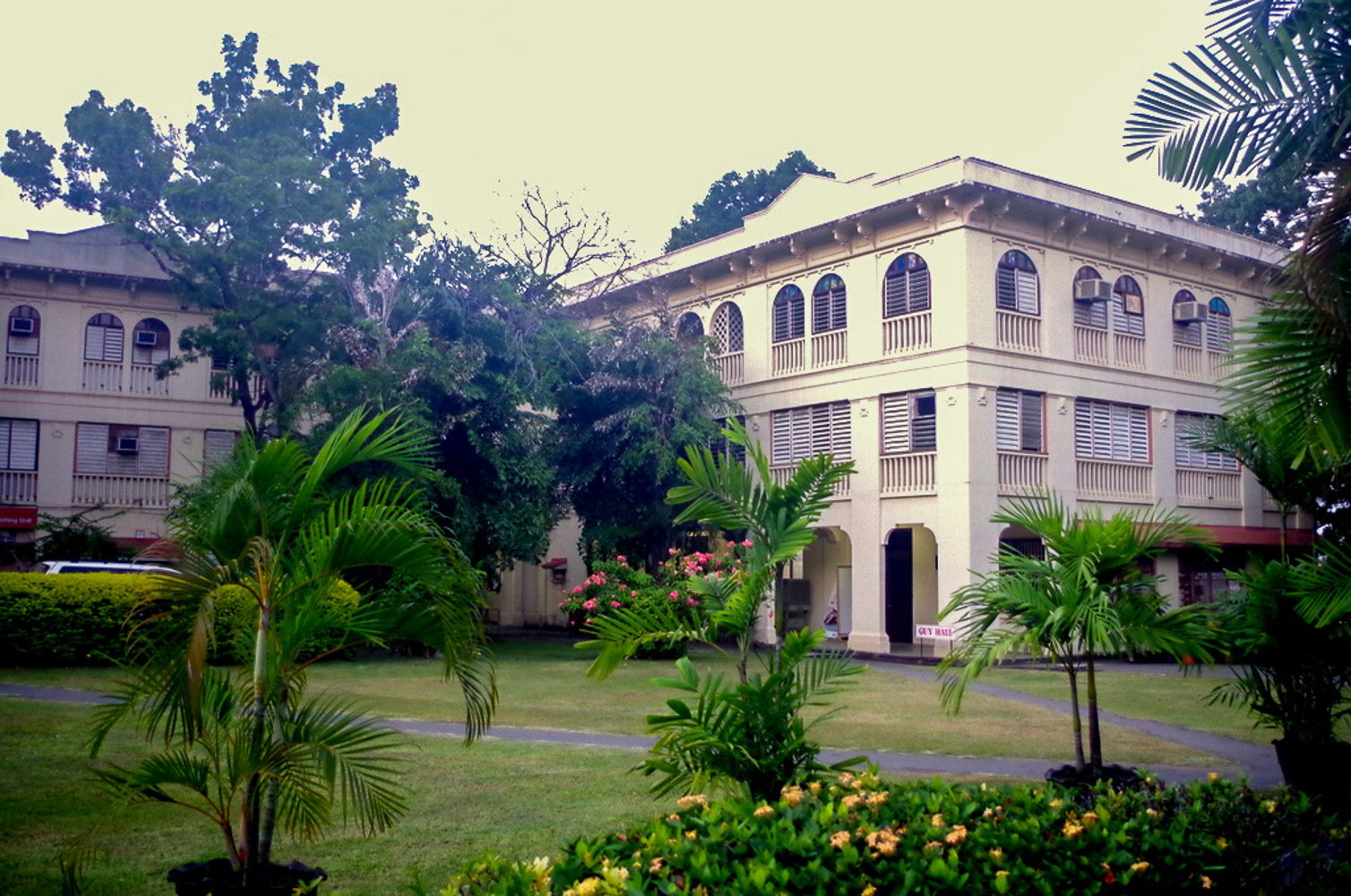
The Silliman campus feels like a world of its own, at once the heart of the city and set slightly apart from it. The first American-established university in Asia, Silliman sports Ivy League trappings draped onto a Visayan island setting. Compared to the Spanish-influenced architecture of many Filipino ancestral homes, Silliman’s old school buildings tend to affect a more austere form of beauty. The modestly-styled buildings look refined and classy in the midst of the grassy lawns and bountiful greenery. The Silliman University Church beams radiantly, while Guy Hall appears daintily picturesque.
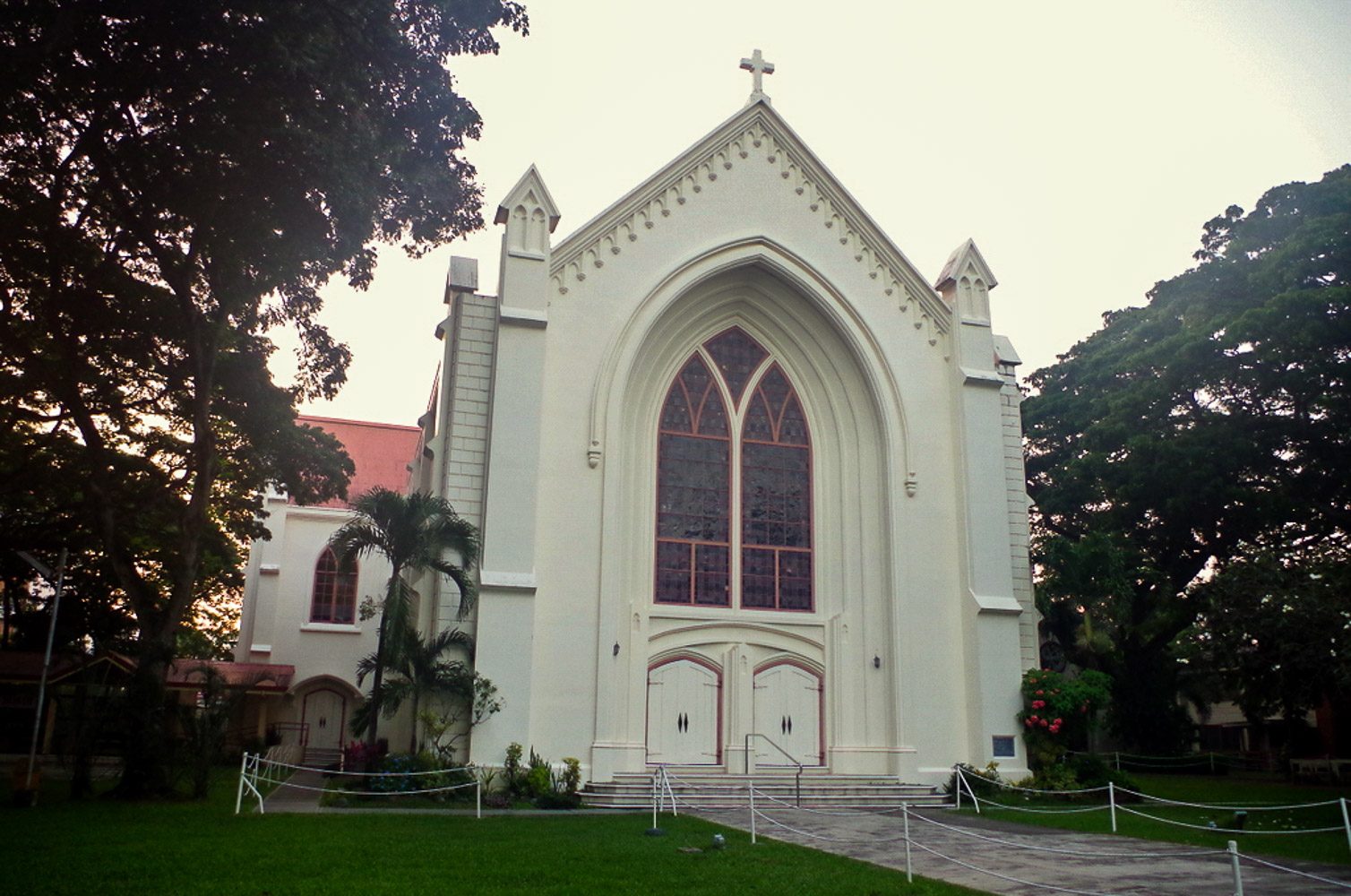
In the middle of the campus, the modernist Luce Auditorium stands a little apart from the older buildings, like the vanguard of another time and place. At least its ascetic appearance does fit the university. I must admit I personally don’t much care for this type of architecture… though the surrounding garden sculptures—balletic forms which had a touch of Giacometti—they brought a smile to my face.
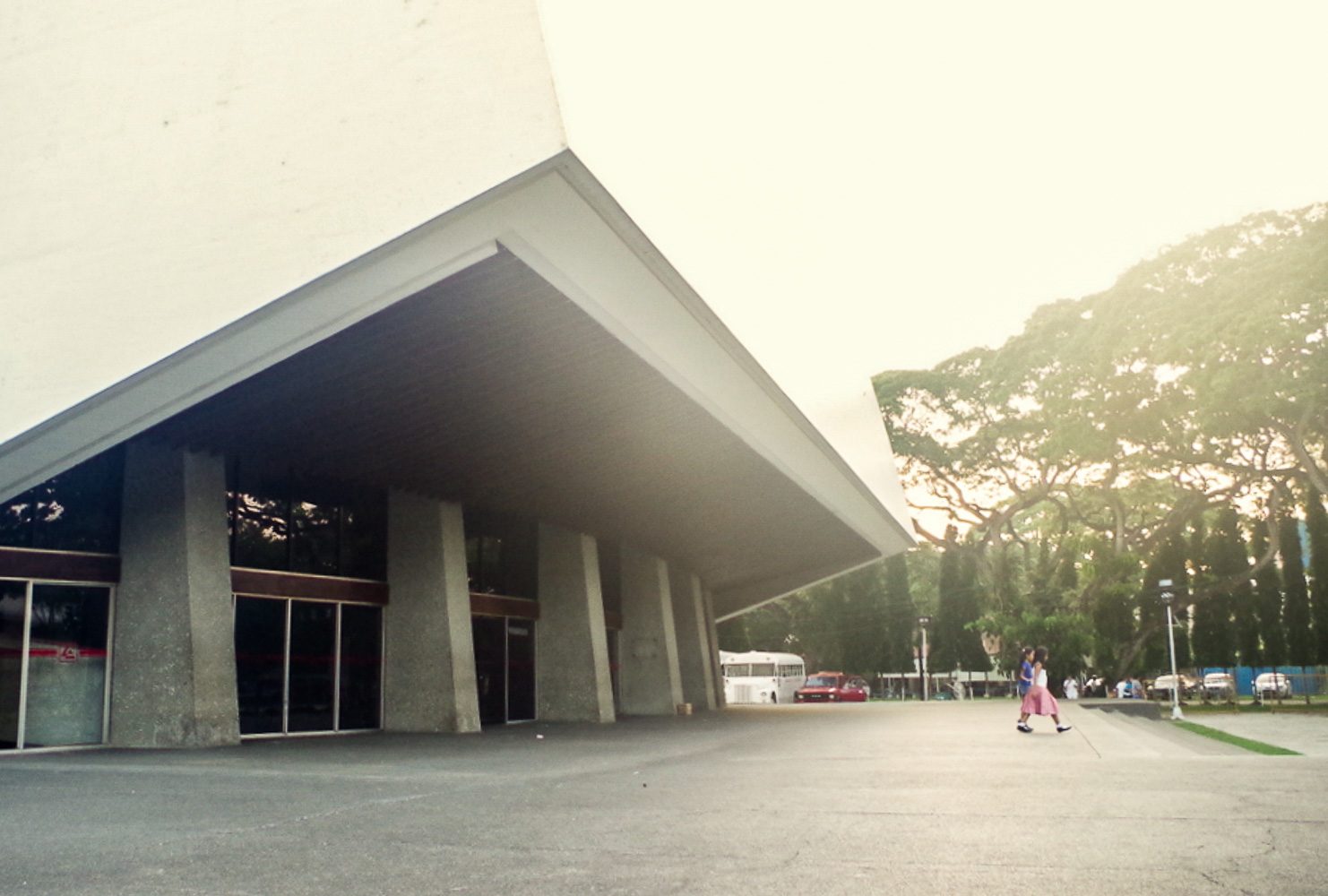
Having a blast at Buglasan
I met Onna at the El Amigo restaurant that night. Onna is a singer and theater actress, and she’s got the confidence to match.
Onna broke it down for me: Dumaguete may be an incubator of artistic talents, but they’re mostly students, kids not likely to stay on after graduation, and they’re largely limited to exhibitions in restaurants. (Indeed, El Amigo had devoted a bit of wall space to an art exhibit). Dumaguete has an art scene but not a gallery scene. And if you wanted to get immersed in it, your best bet would be going to a university here.
And that’s what I set out to do the next day… after a little stopover to check out some costumed exuberance. I may have failed to mention this, but the city was right in the middle of the Buglasan Festival, which was why Dumaguete had been “more frenetic than usual,” a tourist officer had explained to me. I honestly didn’t find the atmosphere frenetic in the least.
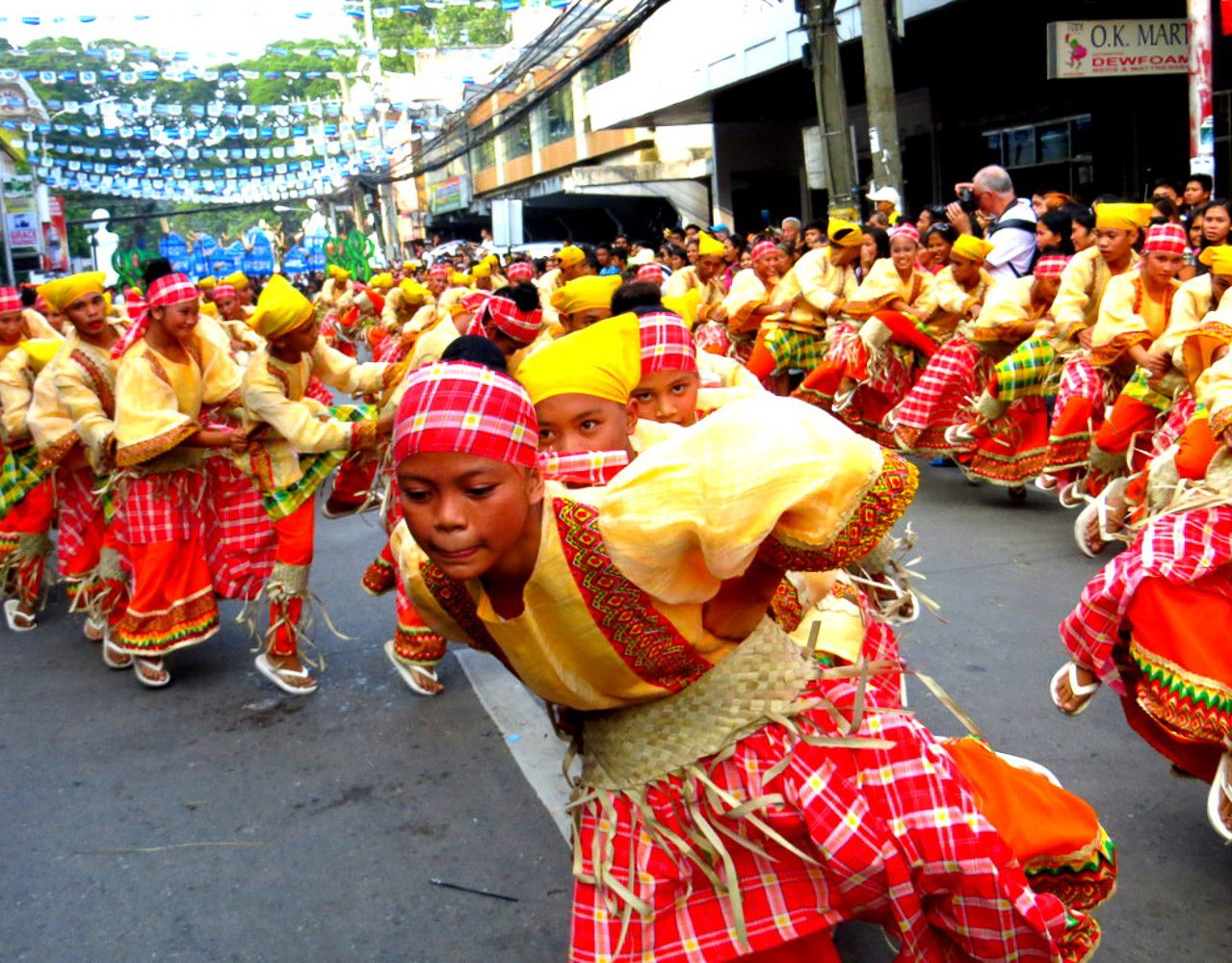
Buglasan is the province’s festival of festivals, where town fiestas from all over Negros Oriental come together in a merrily competitive showdown of local spirit.
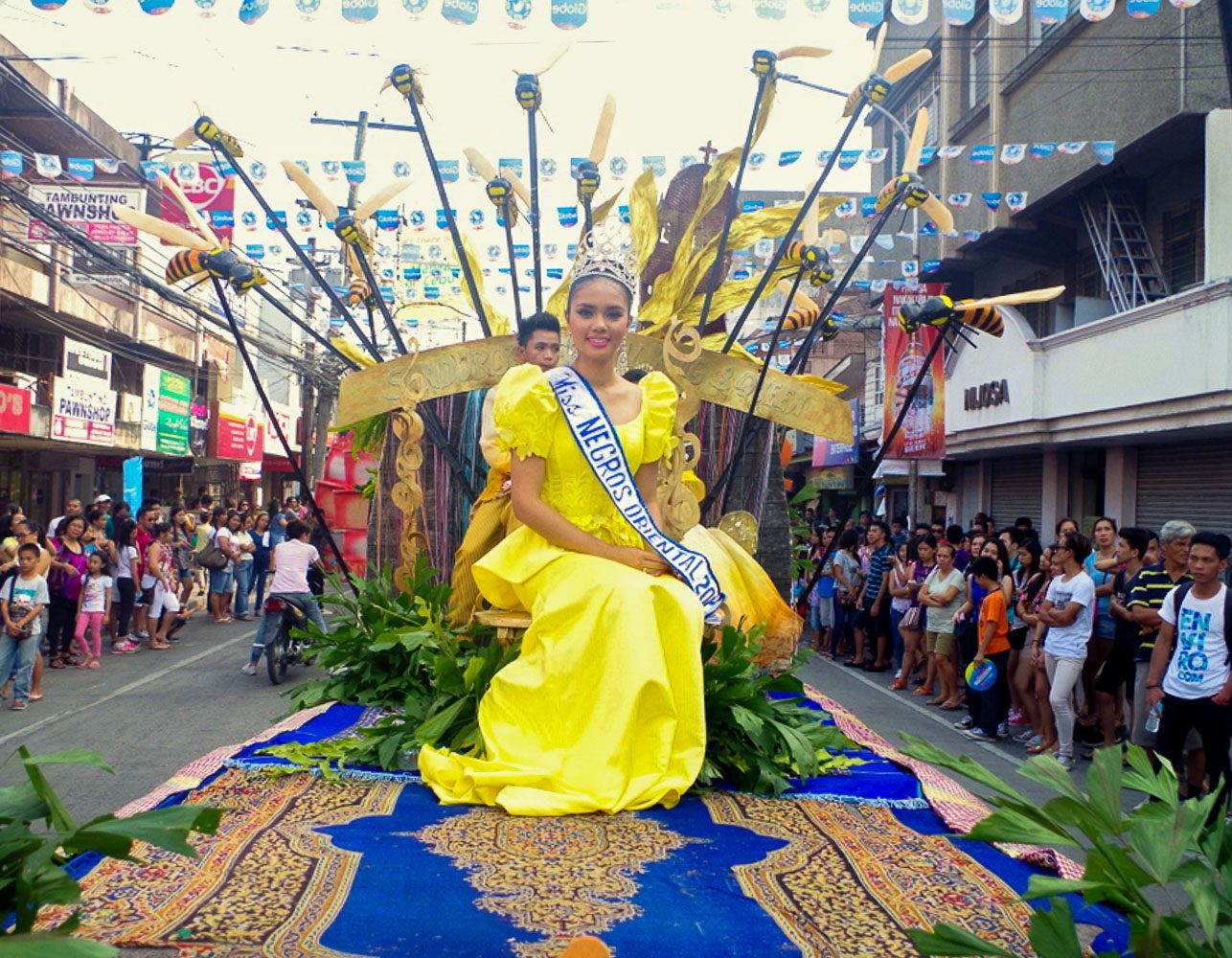
The big event was set to take place at the Macias Sports Complex, a covered stadium. I’ve covered dozens of festivals, and this may have been the first one I’d seen that didn’t make the fiesta squads face off under the bistering rays of the sun.
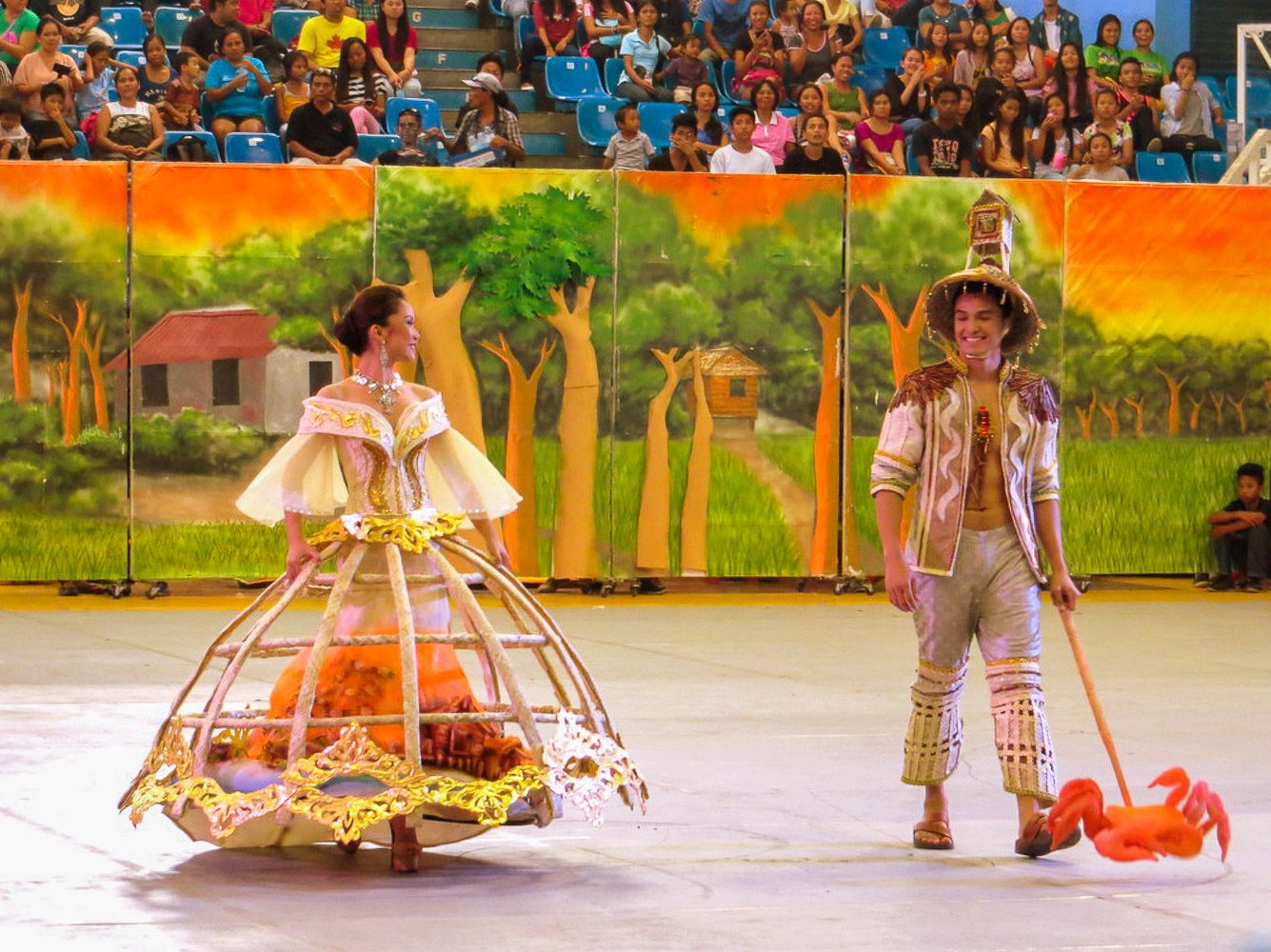
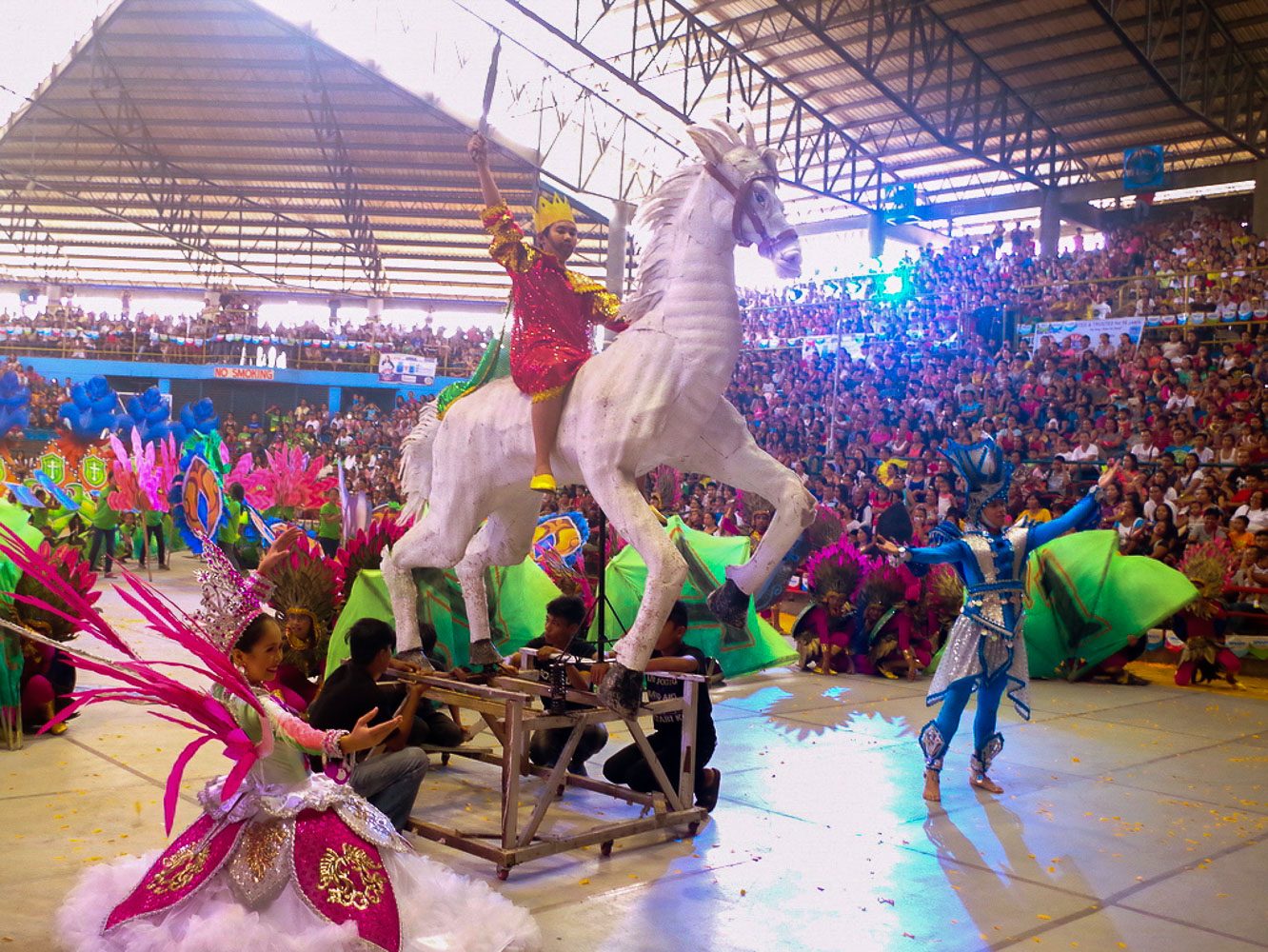
For a couple of hours, I forgot about being in Dumaguete – the world of the festival was all. I got there an hour late, because I knew there would be speeches. They were still going on when I arrived, and they would go on between the performances (I guess it filled in the time while the squads got into place). The performers delivered, I gotta say. A momentous barrage of gaudy spectacle. Dancing crabs. Whirling sheaves of greenery. Shark attacks! Creepy golden monkeys! I love Philippine festivals.
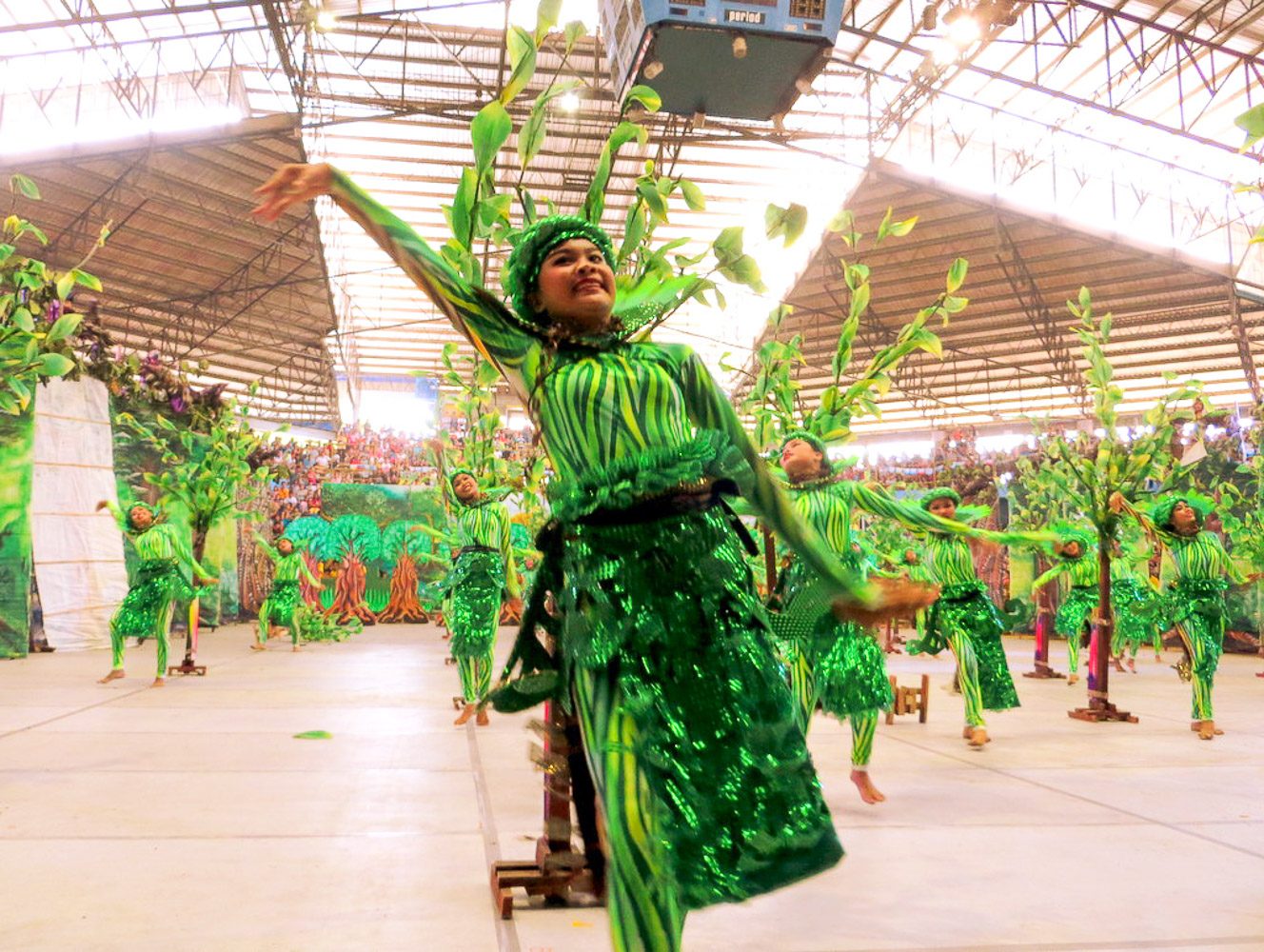
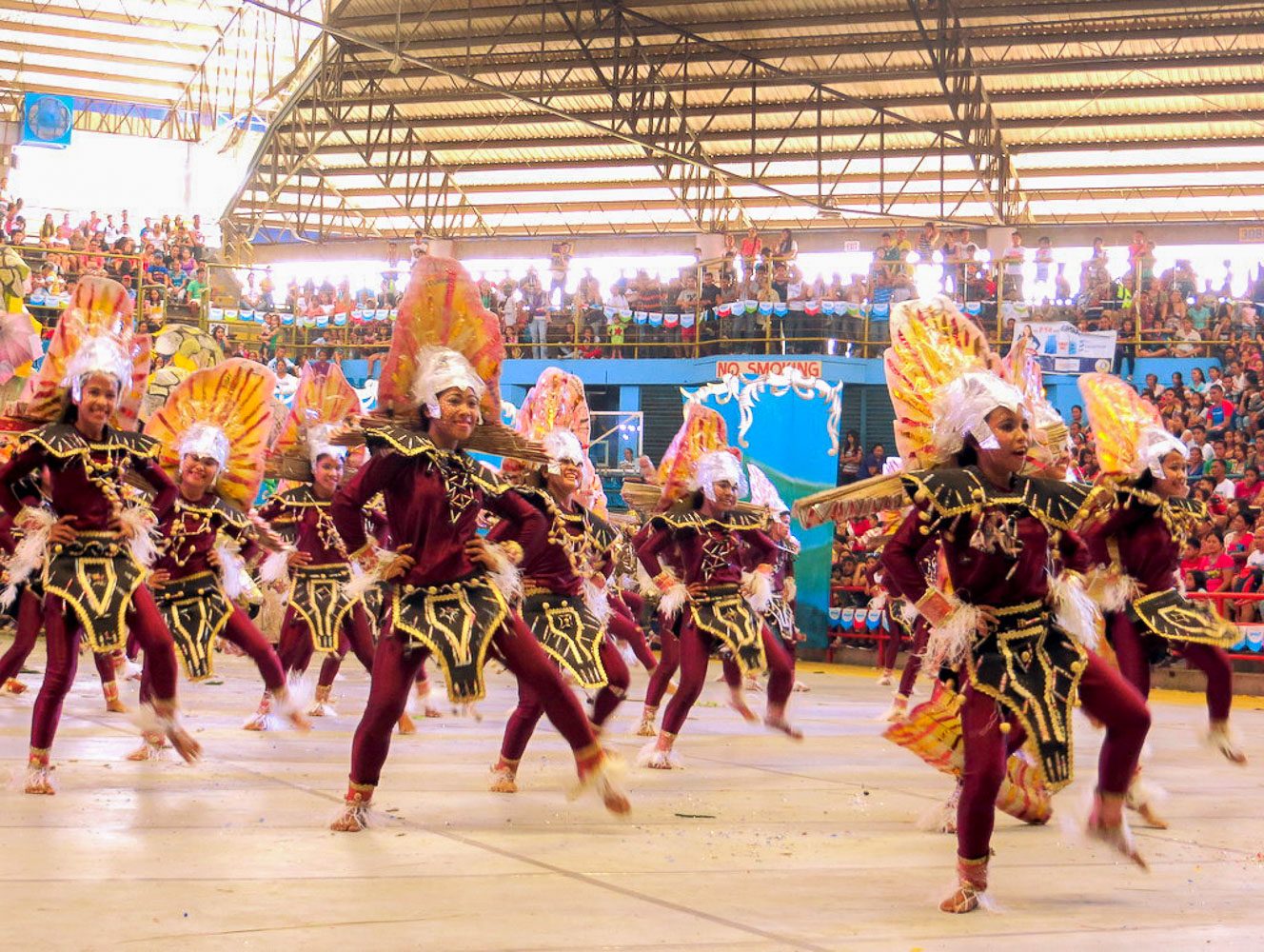
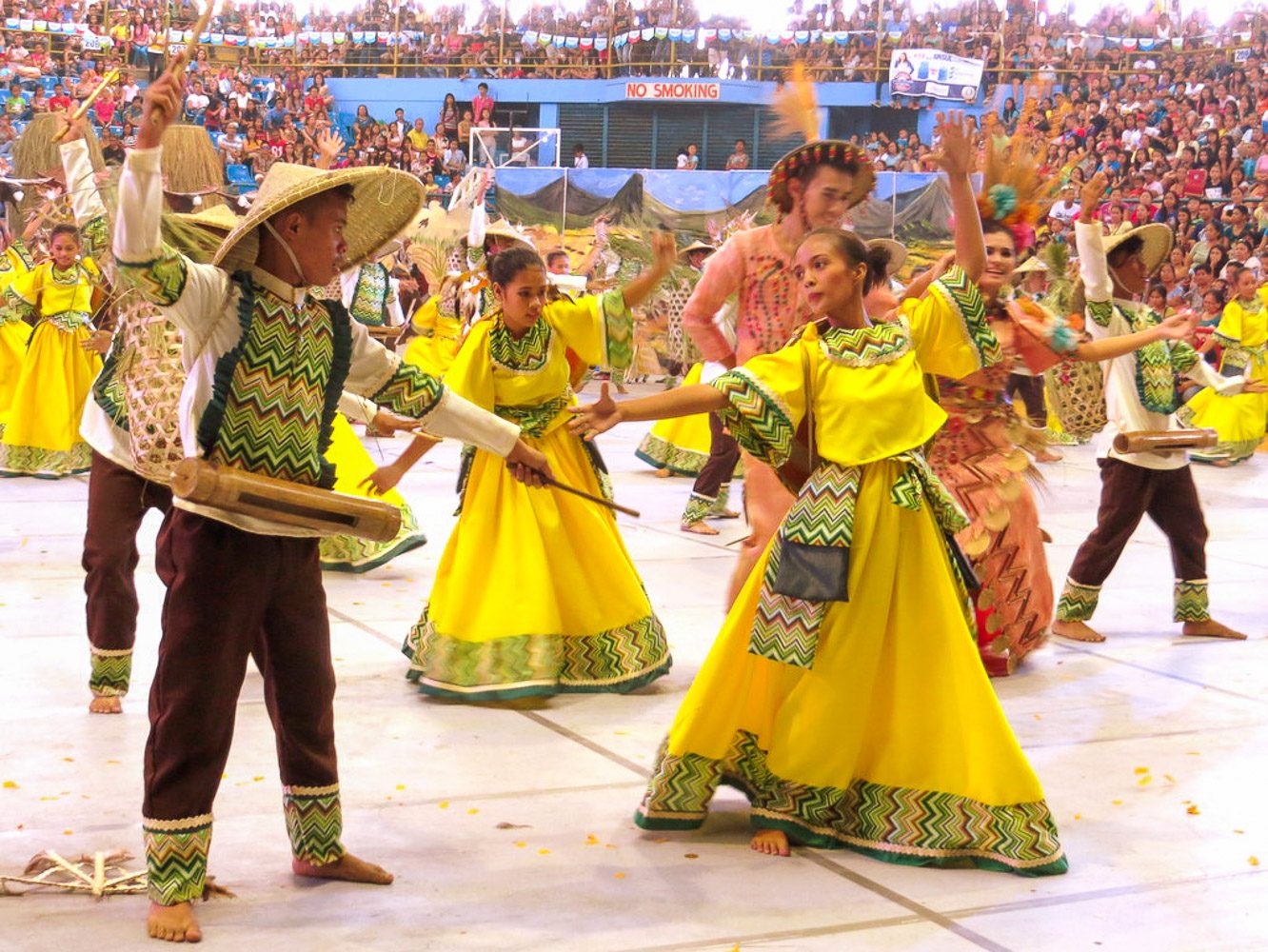
I’d catch more of that again later when the squads paraded the streets. But I had time before that happened, and I thought I’d go talk to an artist at Foundation University.
FU Man
How cool is it that Dumaguete is a place where people typically go about in pedicabs? It adds to the small-town feel of the city. The local pedicabs – what you may know as motorized tricycles – are the primary means of getting around Dumaguete. And I couldn’t get one to take me to Foundation University to save my life.

Okay, so maybe yelling “FU!” at each passing pedicab driver wasn’t the greatest idea I ever had. I was short on ideas, and certainly short on time. I ended up trudging the interminable kilometer between Macias and the university under the noonday sun. I arrived, parched and exhausted. Hersley was waiting at the gate for me.
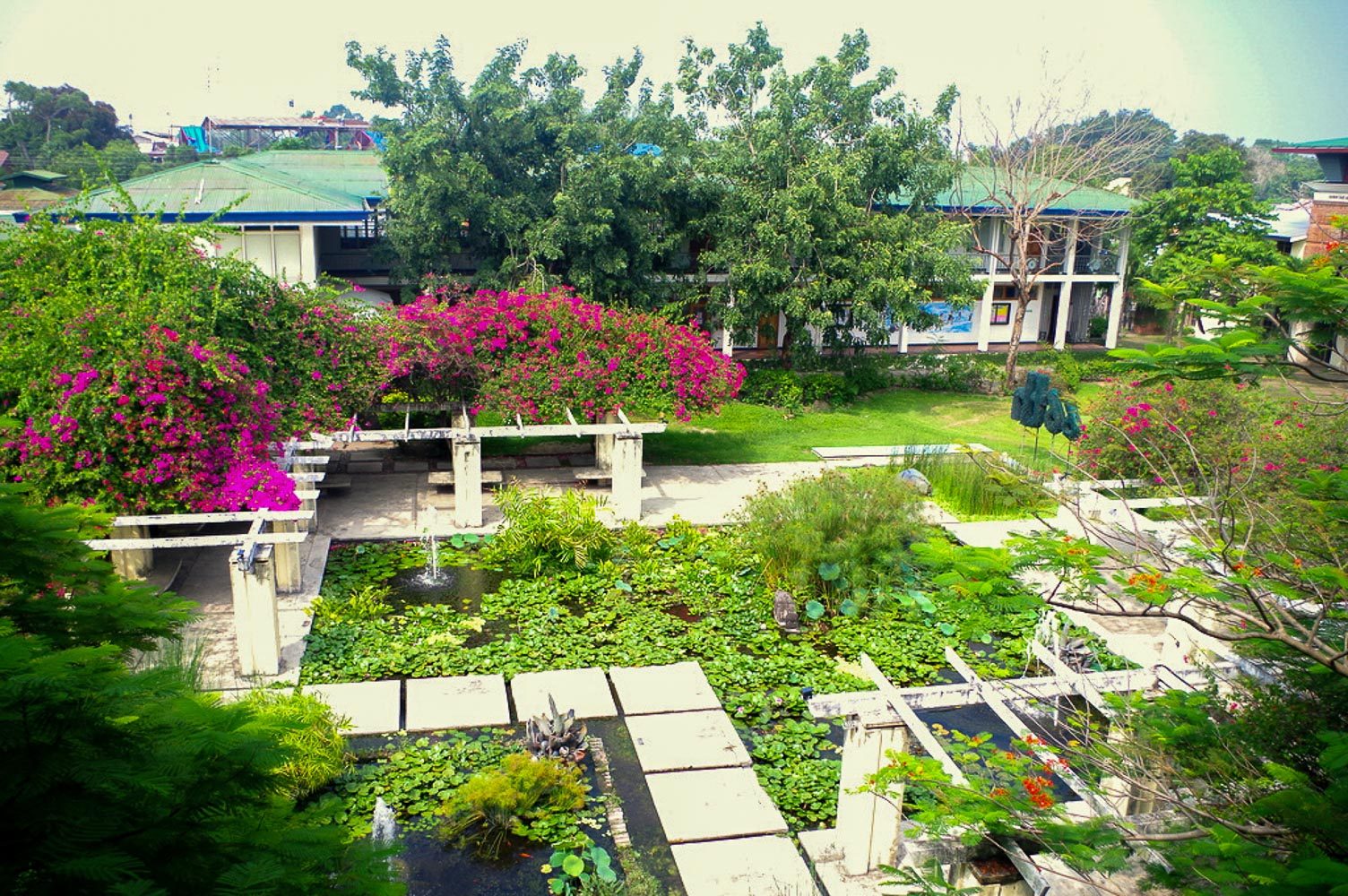
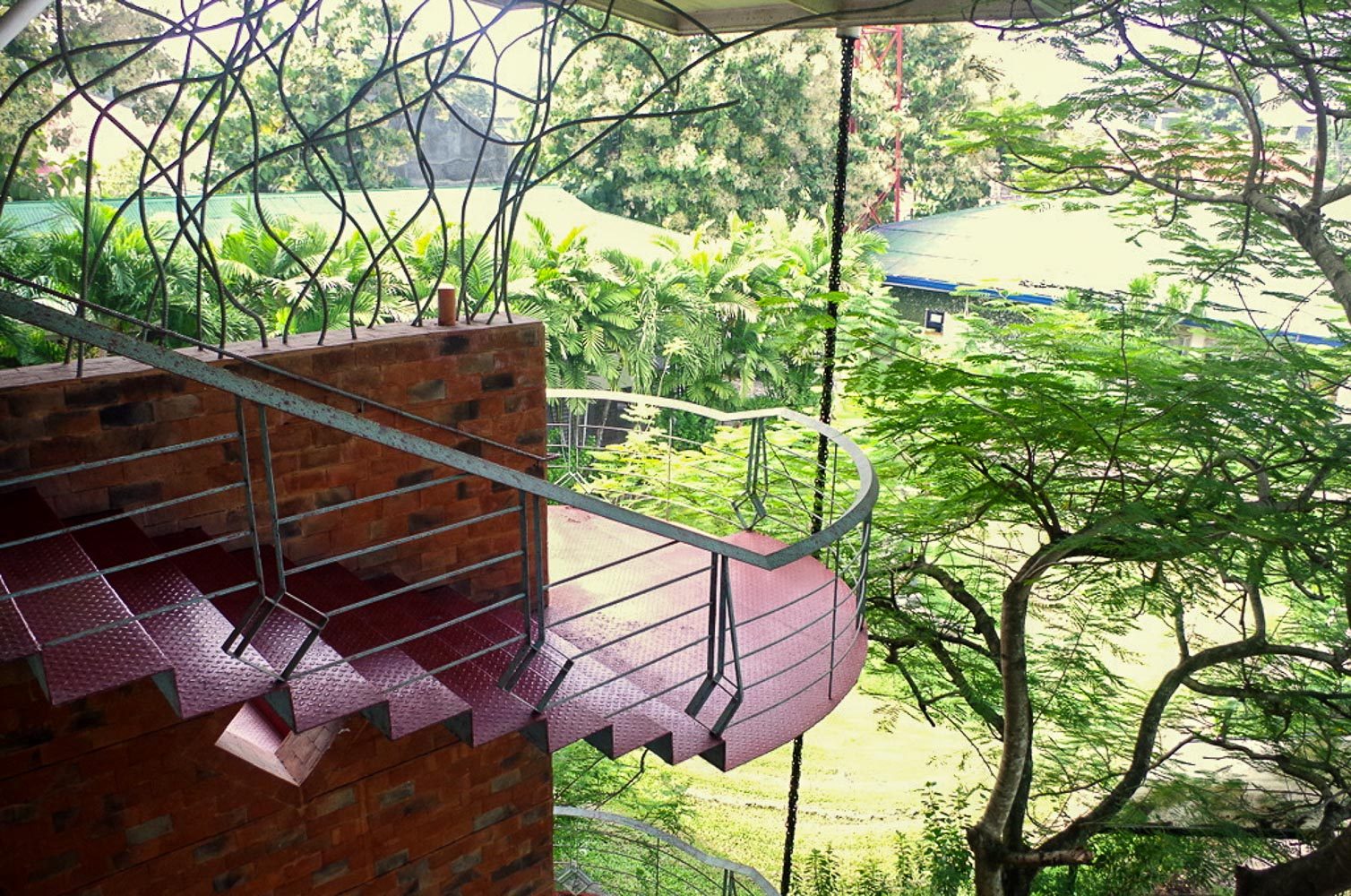
It had been Onna’s idea that I meet Hersley Casero, one of the more prominent contemporary artists of Dumaguete. Somehow I had pictured a distinguished academician in my mind – but the guy standing by the schoolgate was casually dressed and looked like a student. Hersley cheerfully invited me into the FU campus and led me to the studio where he worked. This was a wide room furnished in bric-a-brac, not unlike a hoarder’s messy garage.
Hersley was excited to show me his project, a massive painting that was currently in pieces, divided across separate canvases. They were to be combined into one big Voltron of an artwork, though Hersley admitted that he had yet to determine where each piece would fit.

Hersley had gained a bit of Internet fame a while back – or rather, one work of his did. A photograph of his nephew’s laughing face spread all over the web with zero attribution. Someone else even claimed ownership of the photo, claiming it portrayed a young cancer survivor. Hersley refuted the disinformation, and now runs a Facebook page (“Ha Art Project”) that compiles takeoffs from the original by Hersley and other artists.
At the studio, I also got to meet Hersley’s colleague Anna Koosmann, an American architect from Seattle.
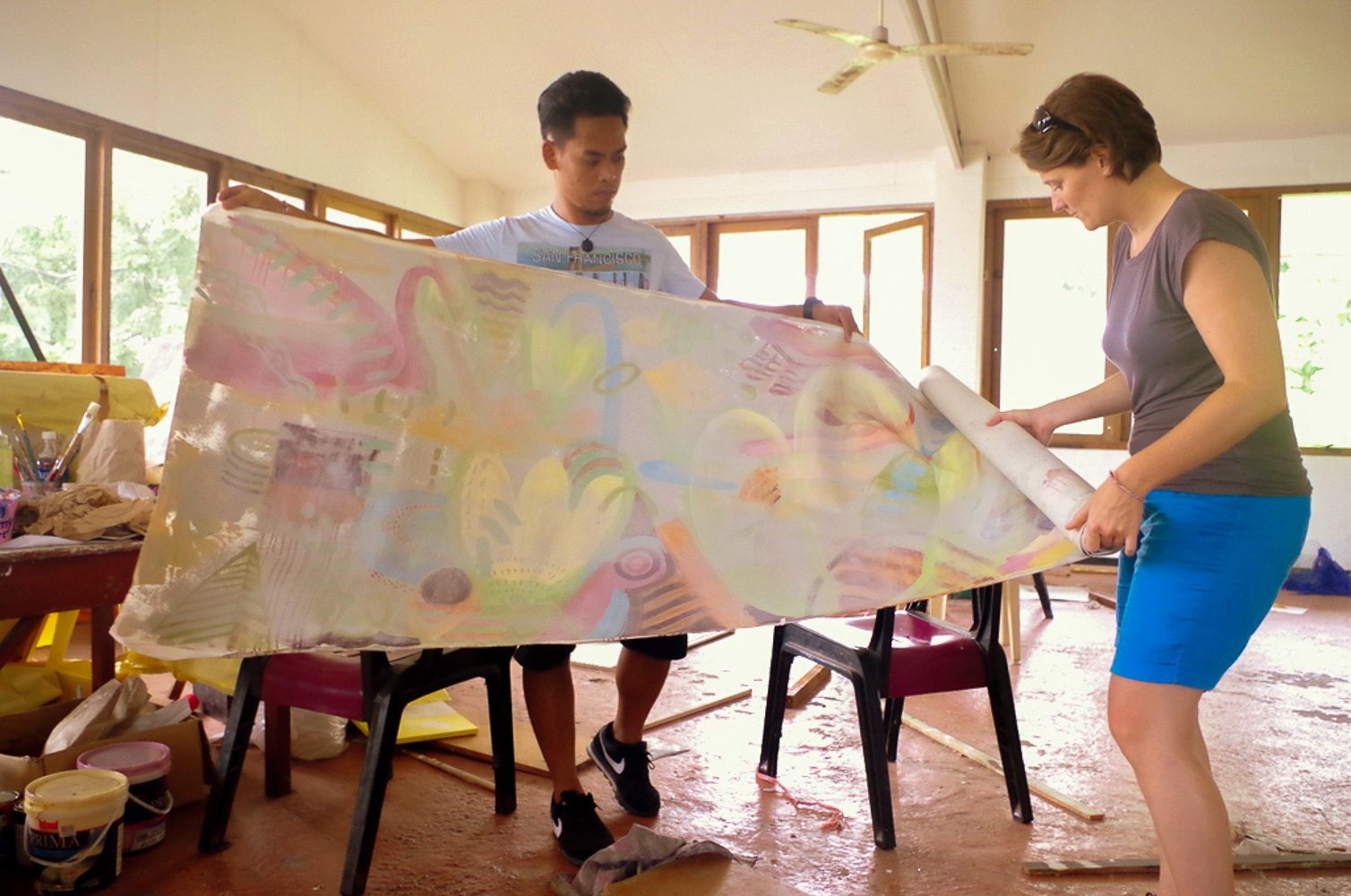
At FU, she is facilitating the student-led design+build team Estudio Damgo, which focuses on sustainable building design using bamboo. One of their projects, a floating pyramid, could be viewed from Silliman Beach.
Time to retire?
I got a pedicab – thank heavens – to take me to Silliman Beach. There wasn’t much to it. A few families were lounging on a skinny stretch of sand. Much of the beach was cordoned behind a barely adorned promenade. It was a far cry from Boracay, but I personally have a soft spot for such unassuming, untouristy seaside affairs.
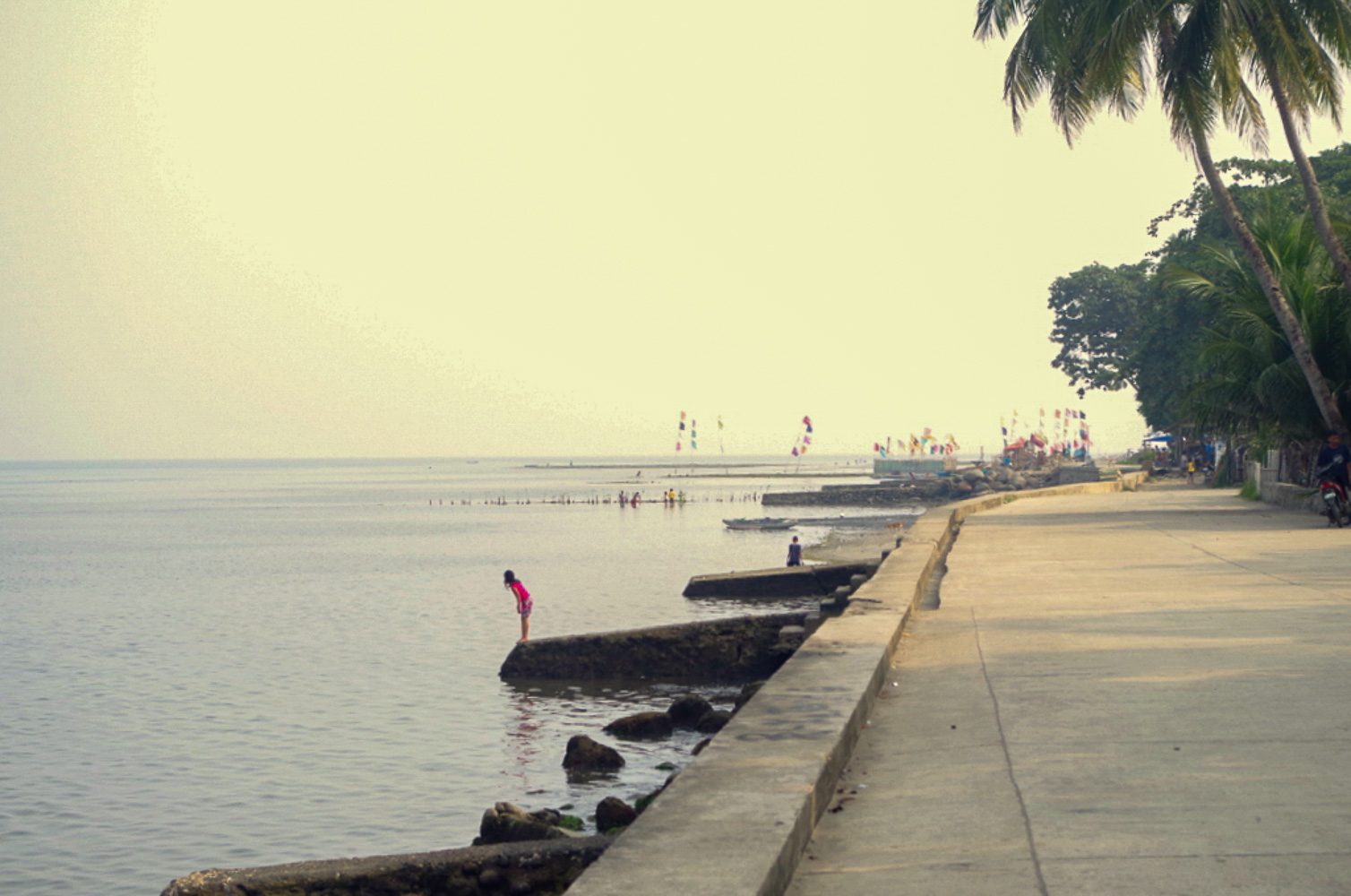
It was a bright and sunny day, and the bamboo pyramid was clearly visible floating on the empty waters.
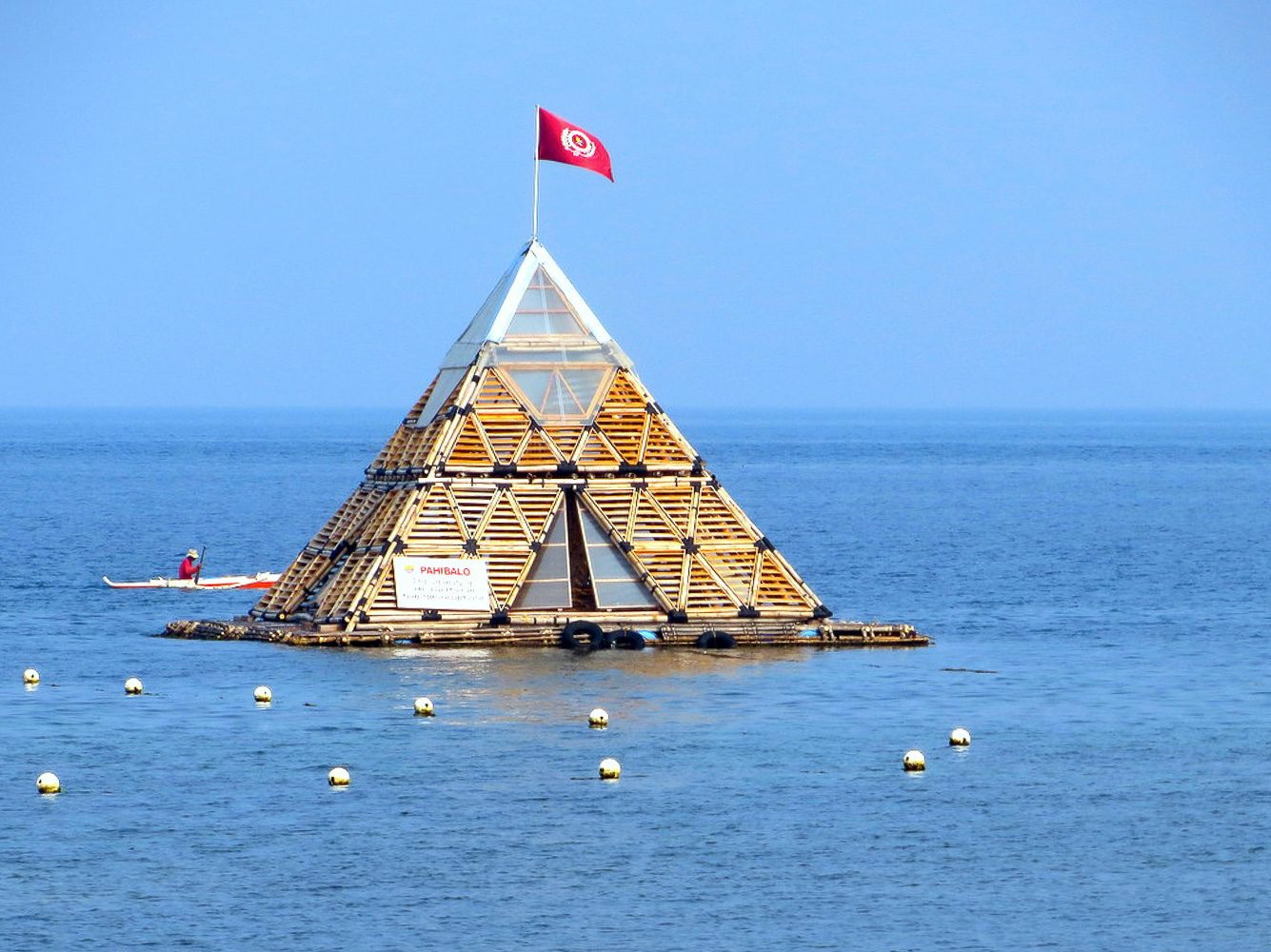
Below the promenade, little kids were running around trying to catch fish. Not a bad place to have a childhood, Silliman Beach. Not a bad place to grow old and raise kids. I get why people would want to retire in Dumaguete. The question is, will its future see a rise in sustainable bamboo architecture? Or more glossy supermalls and 7-11s?
Well, this feels like a good place for me to lay down my pen, even though I haven’t told of all my adventures in Dumaguete. The following day, I’d brave searing heat and overly friendly dogs to visit the Mariyah Gallery – which is not so much a gallery as the private home of artist siblings Danilo Solesta and Kitty Taniguchi.
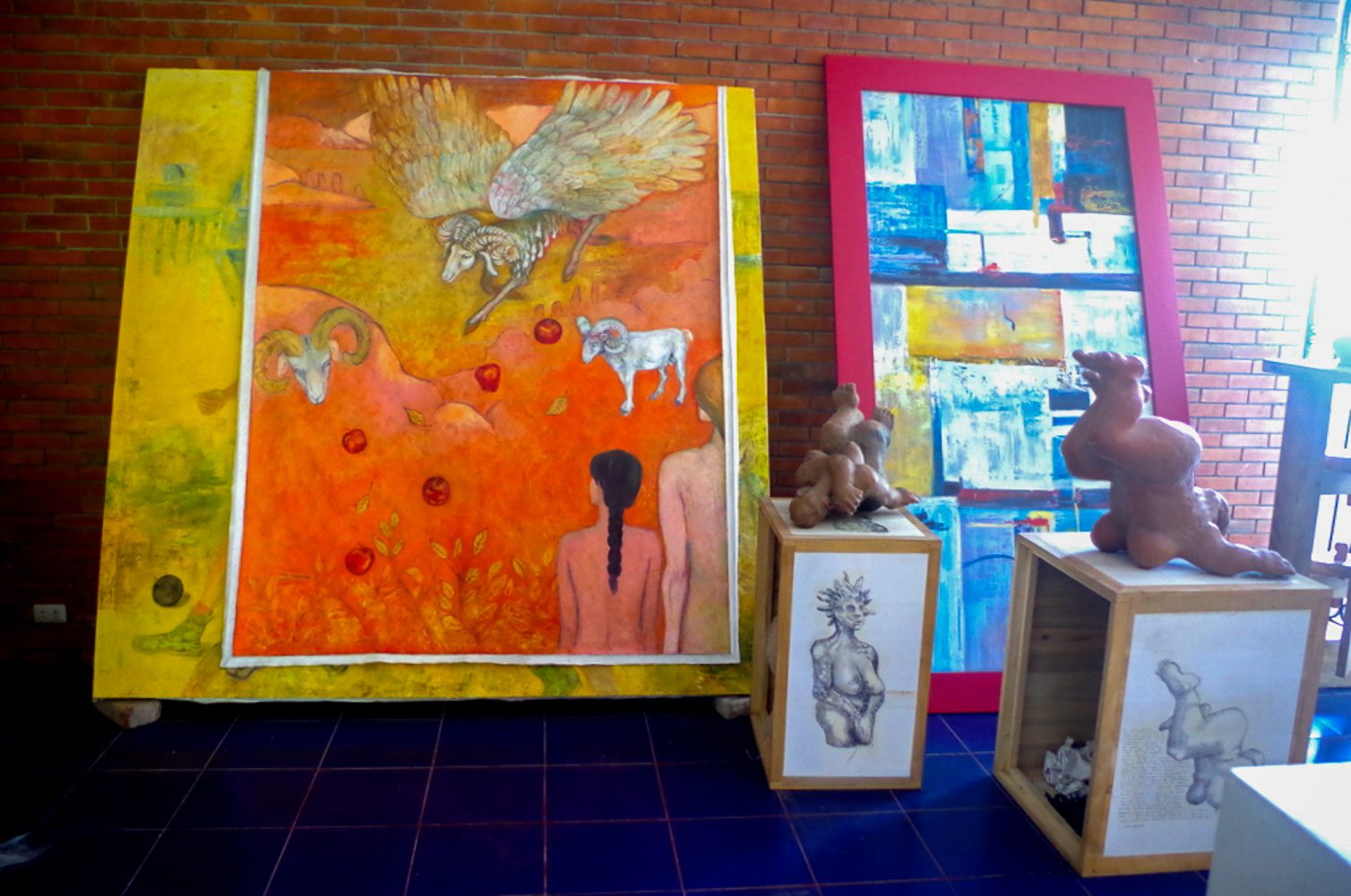
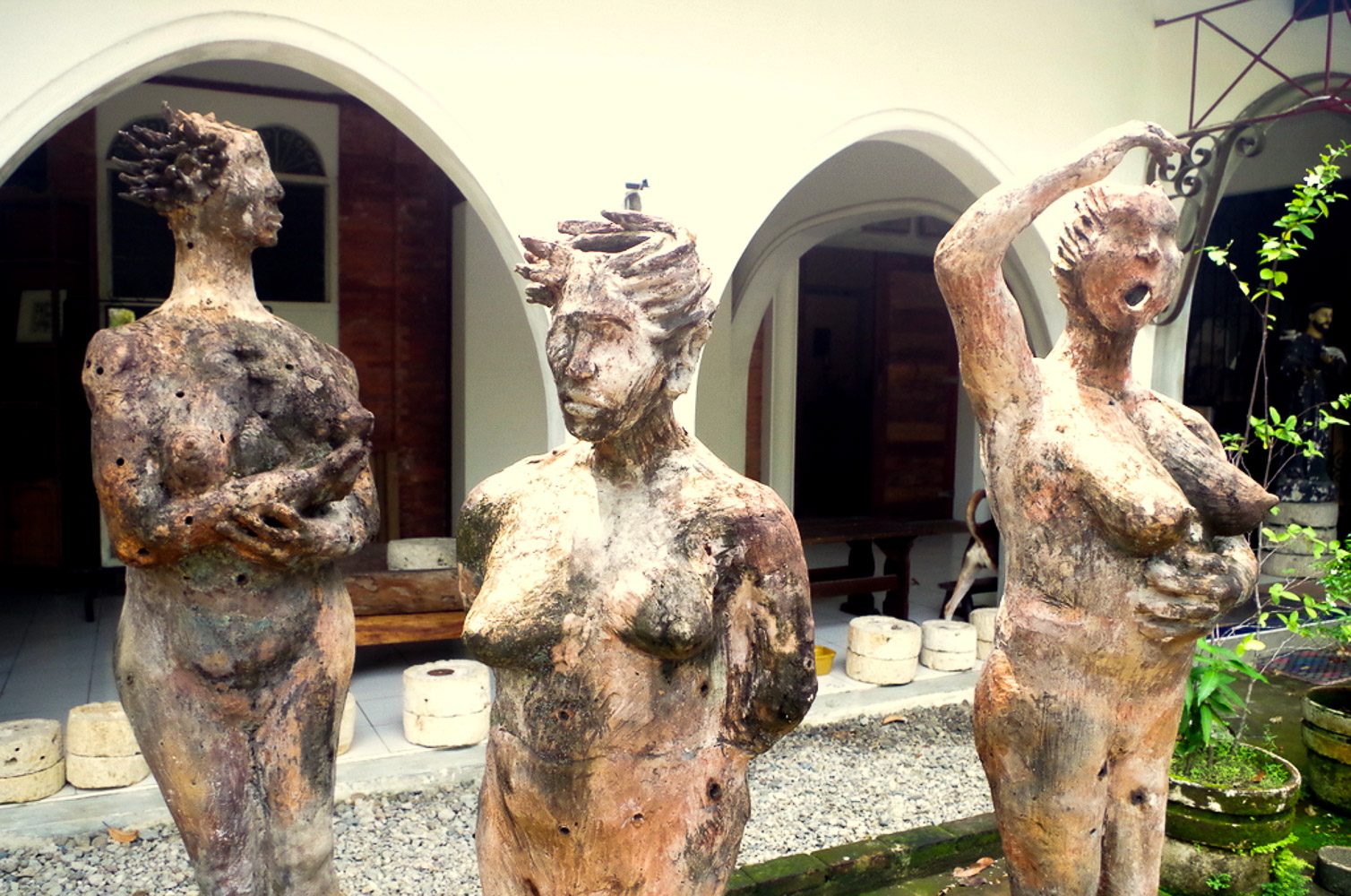
It’s a house inhabited by myriad artworks (and playful canines), but not one readily accommodating of visitors.

On another night, I had sat in on a reheasal by Onna’s youth theater group, YATTA. The company of fresh-faced talents ran through an entire play—in Bisaya. Which I couldn’t understand. I can say that the players were bursting with energy and enthusiasm. I bet they put on one helluva stage show.
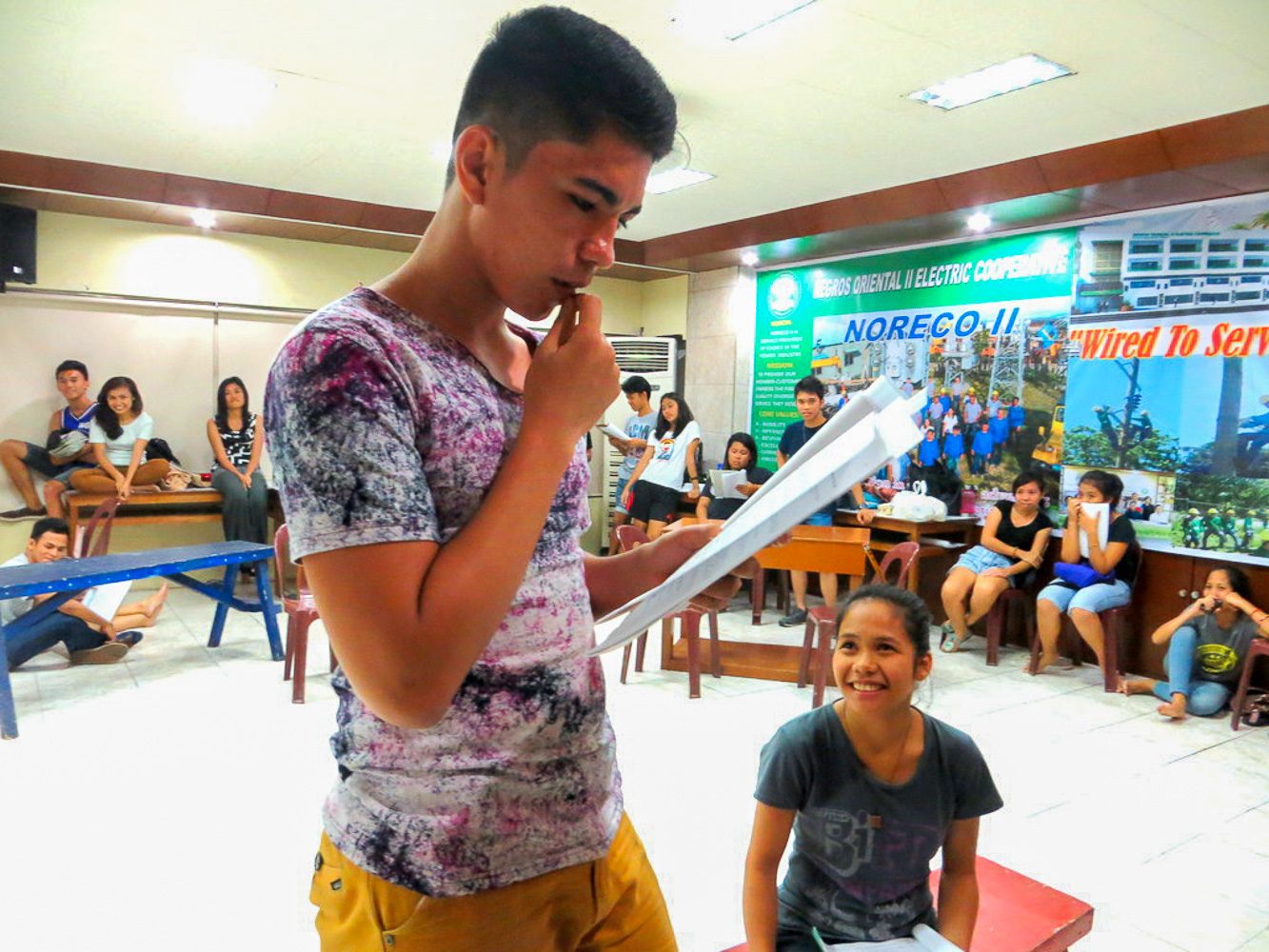
When I add up all these experiences, I come away with a sense of a city with a lot of vibrant energy simmering underneath its placid surface. Dumaguete is certainly an incubator of the arts, but it is still finding its way to a next-level art scene. And that’s fine, if you’re prepared to explore its creative nooks and crannies. You’re sure to find some treasures. – Rappler.com
Oz Mendoza is a freelance writer and photographer. A graduate of the UP College of Fine Arts, he began his career as an illustrator and web designer before exploring the life of a writer. Recently, he became the proud adopter of a new kitten.
Add a comment
How does this make you feel?
There are no comments yet. Add your comment to start the conversation.